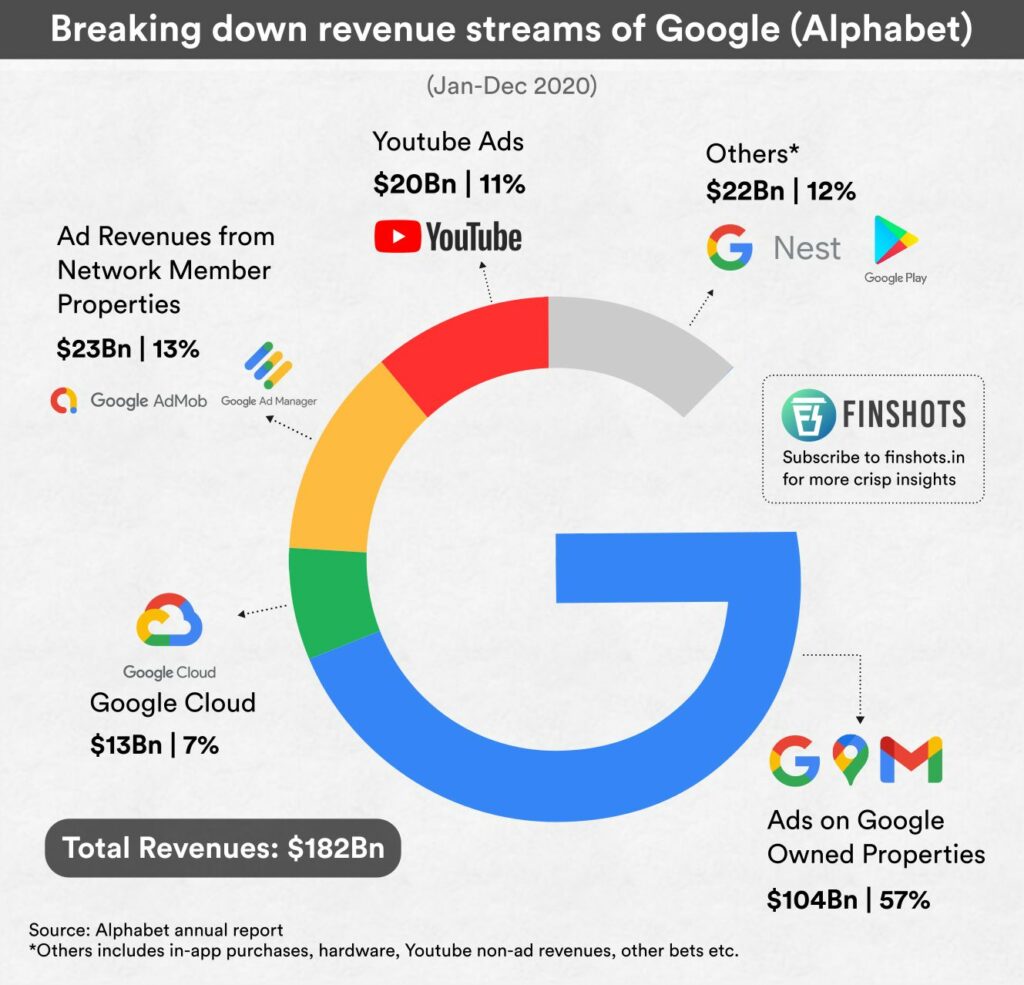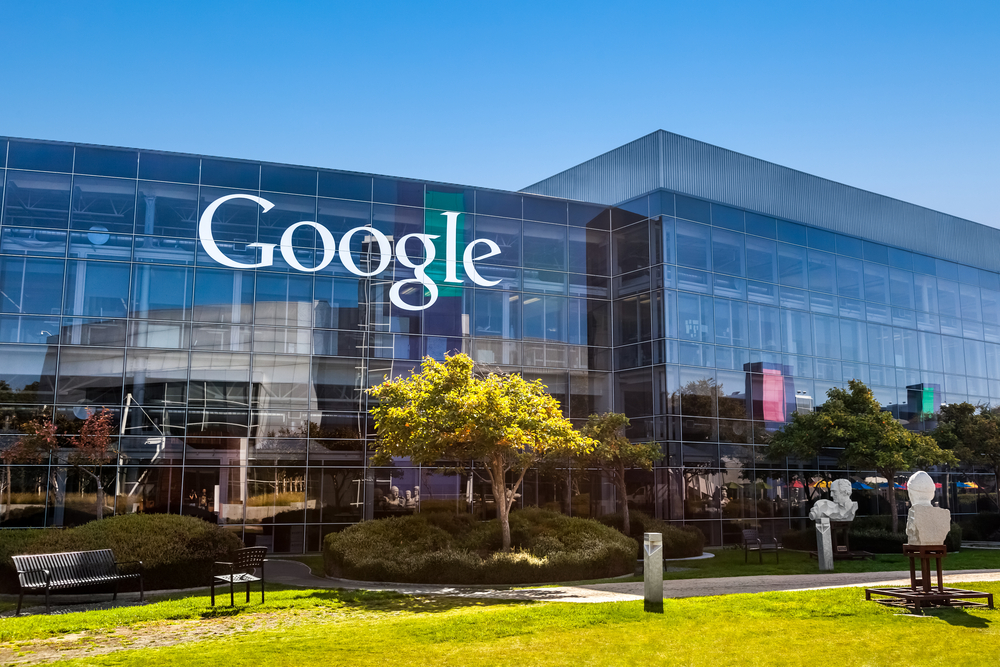As Google turns 25, the behemoth tech company finds itself in a complex, dynamic technology environment that has radically changed since its inception in the late 90s.
Founded on the 4th of September 1998 at Menlo Park in California by Larry Page and Sergey Brin, Google is one of the most iconic businesses of all time, with billions of daily uses across its tremendous range of products and services.
Initially founded as a search engine amid the dot.com boom, Google has diversified into virtually every technology sector – many of which it dominates.
Google is also a veteran AI developer through Google, Alphabet, and research labs DeepMind and Brain, founded in 2010 and 2011. The two labs joined forces in April this year.
Headlines have purported that the AI industry could threaten the usage of search engines and digital advertising – the mainstay of the company’s product portfolio.
Are these claims valid? Is Google lagging behind competitors in the age of AI?
The AI race: Is Google lagging behind?
Some speculate that Google might be losing its edge in the rapidly evolving world of AI.
In February this year, Page and Brin came out of semi-retirement to strategize how Google would fend off the double threat of OpenAI and Microsoft, with other off-shoot startups like Anthropic and Inflection also thrown into the mix.
ChatGPT and other large language models (LLMs) soak up Google users and search traffic, offering a one-size-fits-all approach for anyone exploring the internet. The more people that use Google alternatives, the less Google makes through advertising.
Google Cloud, apps, hardware, and content make up just around 20% of Alphabet’s revenue streams, with ad revenues comprising the vast majority.

As it happens, OpenAI and ChatGPT haven’t emerged as the “Google killer” many touted them as late last year, and evidence suggests that ChatGPT’s user base has stabilized or even declined lately – though it was among the fastest-growing digital services before that.
Big tech companies will always wrestle over products and margins, but Google, Microsoft, OpenAI, and other AI companies face a threat external to the industry – a threat with no name or fixed abode.
A leaked internal memo from a Google engineer earlier in the year stated, “We’ve done a lot of looking over our shoulders at OpenAI. Who will cross the next milestone?…we aren’t positioned to win this arms race, and neither is OpenAI. While we’ve been squabbling, a third faction has been quietly eating our lunch. I’m talking, of course, about open source.”
The open-source AI community may not be equipped with the colossal computing power of the tech giants, but this David vs. Goliath scenario pitches an innovative, agile hive mind of talented computer scientists versus monolithic, bureaucratic tech companies, who are deeply entrenched in their market structures.
Open-source AI has proven that you don’t need mass computing power to train advanced models, with developers running LLMs locally on MacBooks or even a Raspberry PI, albeit extremely slowly.
So, rather than paying a company like OpenAI for a“black box” service with fluctuating performance, businesses – and even public users – can use open-source AI to deploy their own local models. No subscriptions, no value lock-in.
And by doing this, businesses also retain sovereignty over their data and algorithmic workflows.
Open-source aside, it’s still likely that the most complex ‘frontier’ models remain in the hands of those with the most GPUs.
Google’s recent AI strategies and controversies
Google’s journey through the AI landscape hasn’t been without controversies.
A leading engineer, Blake Lemoine, claimed that one of Google’s large language models (LLMs), named LaMDA, had achieved sentience – a claim that Google vehemently denies. Lemoine leaked conversations with LaMDA where the AI expressed a fear of ‘being switched off,’ and he subsequently blasted Google in a pointed Medium post.
Google also controversially fired AI researcher and ethicist Dr. Timnut Gebru in 2020, as she sought to expose bias in Google AI systems.
Most recently, a Semi Analysis Substack post claimed that Google’s forthcoming multi-modal model, dubbed Gemini, will outgun GPT-4’s parameter count by 5 times. No one knows precisely how many parameters GPT-4 has, which makes that a brazen claim.
The Semi Analysis post also highlights that Google had the AI industry in its grasp with the MEENA model, which the post claims was the the largest LLM in the world.
Many have probably never heard of MEENA because a few months later, OpenAI dropped GPT-3 with 65x more parameters and >60x the token count.
The post speaks of the Gemini project, “The point here is Google had all the keys to the kingdom, but they fumbled the bag. A statement that is obvious to everyone. The statement that may not be obvious is that the sleeping giant, Google has woken up, and they are iterating on a pace that will smash GPT-4 total pre-training FLOPS by 5x before the end of the year. The path is clear to 20x by the end of next year given their current infrastructure buildout.”
It’s fighting talk, and OpenAI CEO Sam Altman took to Twitter with a jibe against the glaringly partisan post, which also labeled Google the “most computing rich firm in the world.”
incredible google got that semianalysis guy to publish their internal marketing/recruiting chart lol
— Sam Altman (@sama) August 29, 2023
Google manufactures its own Tensor Processing Units, which means it’s less reliant on third parties like Nvidia than other AI developers.

Does Google’s risk-taking give it a chance to trump OpenAI?
As is easy to justify for one of the world’s largest companies., Google has long taken a scattergun approach to product development, with stacks of notable successes and a handful of notable failures.
Those include the Stadia games console and a plethora of messaging apps – Talk, Voice, Wave, Hangouts, Allo, and Duo – as well as Google Glass and Google Cardboard.
Google’s numerous retired projects are a byproduct of taking considerable risks to achieve disruptive innovation.
In AI, this could mean pushing for general intelligence over narrow applications or devising new neural network architectures that diverge significantly from the norm, which DeepMind and Brain strive for.
DeepMind – which is instrumental to the Gemini project – has a colossal repertoire of its own – including the PaLM-E multimodal generalist agent and AdA, which can adapt to complex long-range tasks as quickly as humans.
These are considered some of the most complex AI models currently in the public sphere and were recently assessed to see if they were conscious.
Google’s recent public AI releases were at times unconventional, with Bard offering a variety of out-of-the-box tools for working with images within the same interface, plus integration of Google Lens.
While Microsoft beat Google in announcing AI tools for its Office Suite in the form of Copilot – which integrates AI into software like Word and PowerPoint – these are yet to be released, and Google recently announced its competitor technology for Google Workspace called Duet.
Risk-taking means sometimes taking the wrong odds, and Google’s relentless drive for innovation has sometimes led the company into ethical gray areas, as was evident in Google’s Project Maven, which used machine learning (ML) to interpret video imagery and could be employed for drone-based surveillance.
The project led to an employee backlash and a reevaluation of the company’s ethical stance on AI.
DeepMind recently announced they were developing a life coach chatbot designed to deliver complex life advice, a concept that raised a few eyebrows.
Global partnerships and collaborations: a strategic move?
In the battle for AI dominance, Google has turned to partnerships and collaborations as a strategic lever.
Working with academic institutions and research organizations provides the company with fresh perspectives and access to cutting-edge research.
For instance, DeepMind collaborates with the National Health Service (NHS) in the UK to apply AI in healthcare settings, a move that advances the field and helps Google branch out into new sectors.

DeepMind’s AlphaFold for mapping protein structures and medical diagnostic models has advertised the company’s appetite for genuine scientific advancement.
Collaborating with governments may also allow Google to navigate the complex regulatory landscape faced by the AI industry, but it’s a symbiotic relationship that concerns antitrust organizations.
Google’s dominance of the consumer software ecosystem
Google controls multiple layers of the global technology ecosystem, offering the company strategic penetration into our daily interactions with technology.
Each layer serves as a conduit for injecting advanced AI technologies into everything from Gmail to Android and the Google Nest family of home assistants.
Google Search supplies the data
Google’s search engine is the primary information retrieval tool for a large portion of the world’s population. Despite Bing’s attempts to seize search users via ChatGPT integration, it still occupies under 10% of the search market.
It’s not just the search index that provides Google with data but how users interact, setting the stage for AI-driven personalized search experiences, real-time translations, and predictive analytics.
Android: AI in every pocket
According to IDC, Android’s market share in the mobile OS landscape was around 71.8% as of 2021.
This equips Google with an unparalleled distribution channel for its AI technologies. Features like Google Assistant, real-time language translation, and AI-based security measures can be pushed directly to billions of devices.
The data collected from this massive user base further fuels and refines Google’s AI algorithms.
Google Workspace
Google Workspace (formerly G Suite) has become indispensable for both public users and businesses, boasting over 3 billion total users and 6 million paying businesses as of 2020.
AI integration within Workspace – recently announced as the Duet family of tools – allows Google to extend its control over the productivity sector.
Google Cloud: AI as a service
Google holds a relatively small percentage of the ultra-competitive cloud market, but a recent announcement of cloud collaborations between Google and Nvidia illustrates fast-thinking to pivot the Google Cloud Platform specifically to AI workloads.
Additionally, Google Cloud offers AI and machine learning (ML) services like AutoML and TensorFlow, shaping how other businesses adopt and implement AI.
Ultimately, it’s difficult to envisage a true “Google killer,” and even if that were to materialize, the company’s multiplicity of products and projects will remain a powerful force for decades to come.





